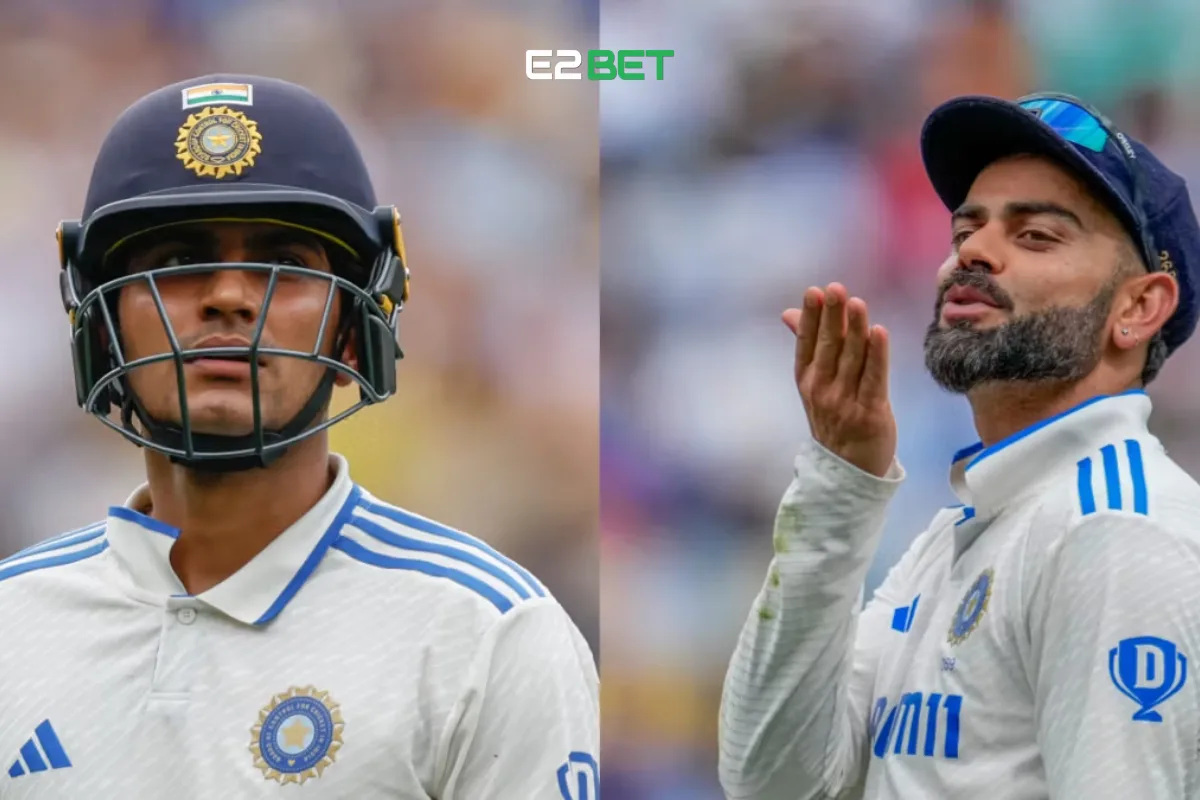The Board of Control for Cricket in India (BCCI) has officially announced a major change in leadership for the Indian Test team. Shubman Gill, one of the most promising young Indian cricketers, has been named the new captain of India’s Test team after Rohit Sharma’s retirement from red-ball cricket. At just 25 years old, Gill steps into a role historically occupied by some of India’s finest, including Virat Kohli, who also recently retired from Test cricket in May.
As fans search platforms like ESPNcricinfo or Cricbuzz for stats and comparisons, a pressing question arises: How does Shubman Gill compare to Virat Kohli at the same age? Let’s break down their performances across all formats—Test, ODI, and T20I—to understand the trajectory of these two modern cricketers.
Shubman Gill vs Virat Kohli in Test Cricket
Performance Before the Age of 25
When it comes to Test cricket, both Kohli and Gill have shown glimpses of brilliance. However, their numbers tell slightly different stories.

Shubman Gill (Test Career Till 25):
-
Matches: 32
-
Innings: 59
-
Runs: 1,893
-
Average: 35.06
-
Strike Rate: 59.93
-
50s/100s: 7/5
-
Highest Score: 128
Virat Kohli (Test Career Till 25):
-
Matches: 29
-
Innings: 51
-
Runs: 1,855
-
Average: 39.46
-
Strike Rate: 50.06
-
50s/100s: 9/6
-
Highest Score: 119
At the same age, Virat Kohli had a slightly better batting average and showed more consistency. But Shubman Gill’s strike rate and shot selection make him a formidable player in red-ball cricket. With the India Test captaincy now in his hands, fans are eager to see how he evolves as a leader.
ODI Comparison: Gill vs Kohli’s Run Machine Status
Dominance in One Day Internationals
Both players have impressive ODI numbers before 25, but Shubman Gill’s ODI stats have raised eyebrows due to his high average and explosive double-century.
Shubman Gill (ODIs Till 25):
-
Matches: 55
-
Innings: 55
-
Runs: 2,775
-
Average: 59.04
-
Strike Rate: 99.57
-
50s/100s: 15/8
-
Highest Score: 208
Virat Kohli (ODIs Till 25):
-
Matches: 142
-
Innings: 134
-
Runs: 5,901
-
Average: 51.31
-
Strike Rate: 89.89
-
50s/100s: 31/20
-
Highest Score: 183
In terms of experience and match-winning performances, Kohli’s resume stands tall. However, Gill’s ODI batting average and strike rate reflect an aggressive style that suits the modern format. It’s worth noting that Gill has already etched his name in history with a double-century, an achievement even Kohli didn’t reach by 25.
For fans wanting to compare cricket players online, these statistics are often reviewed on sites like ESPNcricinfo, or through cricket analysis tools available for data-driven fantasy leagues.
T20 International Records: Kohli’s Early Impact vs Gill’s Learning Curve
Performance in the Shortest Format
T20I stats show Virat Kohli’s early dominance even when the format was still finding its place in international cricket. Shubman Gill, on the other hand, is still establishing himself in the format.
Shubman Gill (T20I Till 25):
-
Matches: 21
-
Innings: 21
-
Runs: 578
-
Average: 30.42
-
Strike Rate: 139.28
-
50s/100s: 3/1
-
Highest Score: 126*
Virat Kohli (T20I Till 25):
-
Matches: 28
-
Innings: 26
-
Runs: 972
-
Average: 46.28
-
Strike Rate: 131.70
-
50s/100s: 9/0
-
Highest Score: 78*
Despite a slower strike rate, Kohli’s consistency and finishing ability made him a T20 specialist even at an early age. Gill’s higher strike rate shows promise, especially as the format evolves, but he will need more innings to prove his long-term worth.
Who Was Better at 25? A Balanced Verdict
When comparing Virat Kohli vs Shubman Gill till the age of 25, it’s clear that both players have made significant impacts in different ways. Kohli was a record-breaking icon in ODIs and a consistent performer in Tests and T20s. Meanwhile, Gill’s early milestones, such as his double century in ODIs and strike rate in Tests, show enormous potential.
Gill is now leading the Indian team at a young age, much like Kohli once did. The question, “Who is better—Kohli or Gill?” is one fans and analysts will continue to debate, especially as Gill’s captaincy journey unfolds.
Conclusion:
Shubman Gill’s elevation to India’s Test captain is not just a reward for talent but also a challenge that will test his temperament and leadership. As Indian cricket fans look forward to the England tour, the spotlight is now firmly on Gill—not just to maintain form, but to lead with purpose.
As Kohli transitions into retirement and Gill takes charge, the baton of leadership has truly passed. Whether you’re a casual fan or someone looking to join a fantasy cricket team, keep an eye on how this young star navigates this defining phase.
FAQs:
1. Who had better Test stats at 25 — Shubman Gill or Virat Kohli?
Virat Kohli had a slightly better average, but Gill had a higher strike rate in Tests by age 25.
2. Did Shubman Gill score more ODI runs than Virat Kohli by 25?
No, Kohli scored more runs, but Gill had a higher average and strike rate in fewer matches.
3. Who had more centuries in international cricket before turning 25?
Virat Kohli had more centuries across formats compared to Shubman Gill at the same age.
4. Is Shubman Gill the youngest Test captain for India?
He is among the youngest, taking over captaincy at age 25 after Rohit Sharma’s retirement.
5. How does Gill’s T20I performance compare to Kohli’s at 25?
Kohli had better consistency and average, while Gill had a higher strike rate and one T20I century.